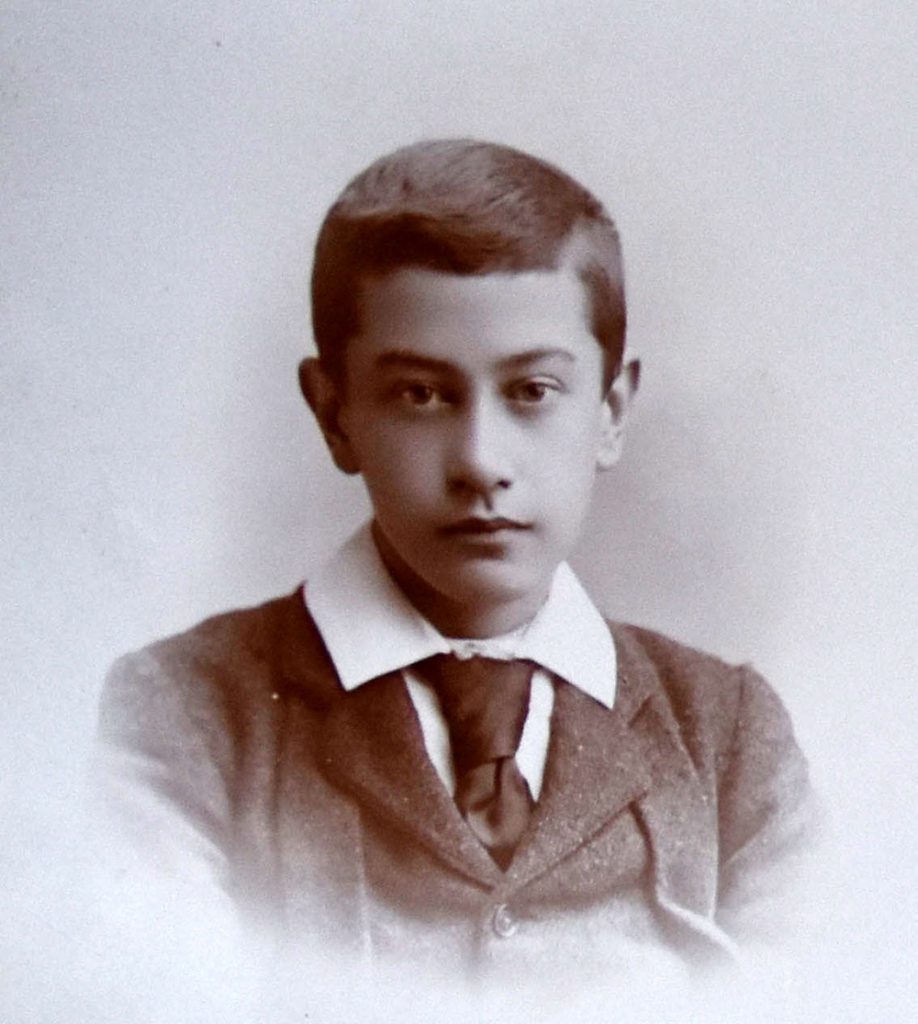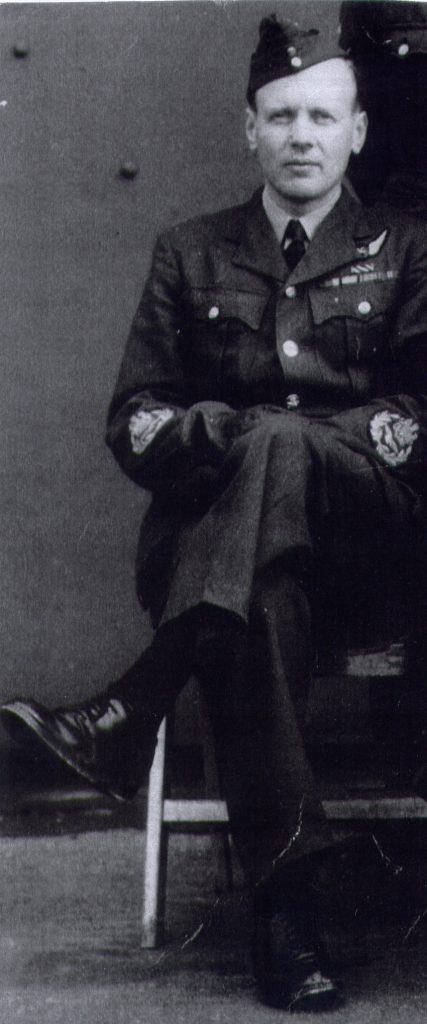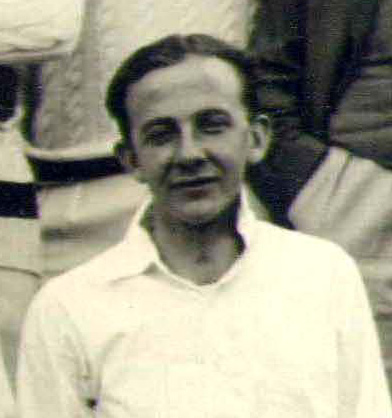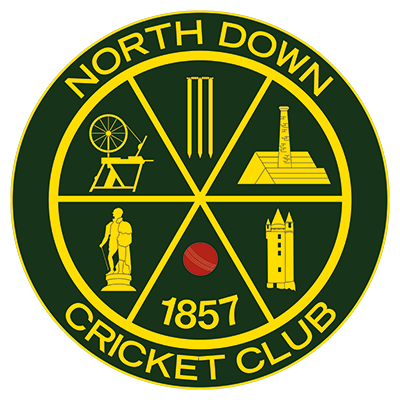World War I

The outbreak of the Great War in 1914 caused a temporary curtailment of the league, and when it was resumed in 1919 the ‘Big Two’ of North Down and North of Ireland finished at the top of the table, the former being awarded the title on the most slender of margins to complete the ‘double’ for the third time. The focus wasn’t always on senior cricket, and for many years after the war, the Northern Ireland District Army Cup Final was played at ‘The Green’, yet another of the many military matches played in Comber that preserved and strengthened a tradition that lasted into the Seventies.
North Down had seventy members or ex-members who served with the Colours, sixteen of them making the supreme sacrifice. There was no organized recruitment as everyone was left to do what they felt was the right thing. It is amazing where each member eventually took up service and a miracle that so many of them returned home alive after the horrors of this war. We should never forget the sacrifices these brave members made and their place in the history of North Down Cricket Club is, rightfully, at the top of our tributes to those who have gone to a greater calling.
Members who were killed in action during the Great War 1914-1918:
| MJ Alexander | North Irish Horse. Trooper. |
| AE Baxter | 3rd South Lancashire Regiment. Lieutenant. |
| JE Drake | 79th Battalion of the Canadian Expeditionary Force. Private. |
| LA Hind | 7th Territorial Battalion (Robin Hood) of the Sherwood Forresters, wounded, twice mentioned in despatches and awarded the Military Cross. Lieutenant Colonel. |
| W Carruthers | Royal Engineers. 2nd Lieutenant. 3rd Reserve Battalion RIR |
| RD Niblock | 8th Battalion Australian Contingent. Private |
| JS Culverwell | 59th Royal Scinde Rifles FF. Captain. Mentioned in Despatches. |
| HD Ritchie | 2nd Scottish South West African Infantry Force. Private. |
| AS Taylor | MD Royal Army Medical Corp. |
| E de Wind | 31st Service Battalion, 2nd Canadian Contingent and 17th Battalion of the Royal Irish Rifles. 2nd Lieutenant. Victoria Cross. |
| T McRoberts | 15th Battalion of the Royal Irish Rifles. 2nd Lieutenant. |
| JM Spence | 13th Battalion of the Royal Irish Rifles. Lance Corporal. |
| GJ Bruce | 13th Service Battalion of the Royal Irish Rifles and Staff at the 107th Brigade. DSO. Military Cross and Bar. Captain. |
| SM Geddis | 1st Battalion of the Leicestershire Regiment and Army Cyclist Corp. Lieutenant. |
| JL Galway Jnr | 31st Battalion Canadian Infantry died of wounds received in battle. Private. |
| RF Kerr | 18th (Reserve) Battalion Royal Irish Rifles. |
Members who served with the Colours during the Great War 1914-1918:
| Chief PO James G Allen | Royal Naval Yacht Patrol, ML Section who became a Justice of the Peace and a prominent citizen of Comber. |
| James John Cullamore Allen | RASC, Mechanical Transport. |
| Lieut. William Andrews | Royal Garrison Artillery & Royal Army Ordnance Corps. |
| Major C Blakiston-Houston | RASC, was a Major in the Ulster Division and was ‘Mentioned in Dispatches’. He also served as Church Warden in St Mary’s Parish Church. |
| David M Byers | Royal Canadian Regiment was wounded in action. |
| Lieut. HP Cinnamon | 1st Battalion West Yorkshire Regiment. Thrice wounded. Awarded the Military Cross. |
| Private L’Isle Cinnamond | 3rd Battalion of the Canadian Machine Gun Corps was twice wounded. |
| WL Clarke | |
| Capt. Francis EP Cowan | Artillery Captain at the North Antrim Garrison and was wounded in action. |
| Col. RG Sharman-Crawford | 18th (Reserve) Battalion Royal Irish Rifles. |
| WC Coulter | Honourable Artillery Company. |
| Major GH Culverwell MD | RAMC. |
| A Davis | |
| R Gailey | 7th (Service) Battalion East Lancs. Regiment. |
| GL Gibson | Chartered Accountant BEF. |
| Lieut. Wallace D Gilmour | 2nd Battalion of the South Staffordshire Regiment. |
| Sergt. Robert Webster Glass | Royal Inniskilling Fusiliers. Mentioned in dispatches. Awarded the ‘Medaille Militaire.’ |
| Lce/Corpl. DA Gold | 14th (Service) Battalion RIR Wounded Prisoner of War |
| Capt. NB Graham MD | RAMC. Wounded.Awarded the Military Cross. |
| Major DS Graham MD | North Irish Horse and RAMC, Field Ambulance. |
| Capt. LD Graham MD | RAMC. |
| Capt. RF Henry | 15th (Service) Battalion Royal Irish Rifles and Headquarters Staff 36th Ulster Division and Royal Field Artillery. |
| JW Hicklin | |
| Lieut. JE Hill-Dickson | 13th Royal Irish Regiment. 1st and 2nd Gn. Battalion RIF. |
| CB Houston | RASC Ulster Division, 36th Reserve Pack |
| Capt. RT Jamison MD | South African Medical Corp Botha’s SW African Force. |
| D Keith | |
| WA Miller | 4th (Territorial) Battalion Royal Scots Fusiliers and the 2nd King Edwards Horse and Tank Corps. |
| Capt. WN Montgomery MD | 3rd Reserve Battalion Royal Irish Fusiliers and RAMC. Mons Star, Order of the Nile, Order of ‘Nahda’ Twice mentioned in despatches. |
| Capt. FP Montgomery MD | RAMC. Awarded the Military Cross and the French Croix de Guerre & Bar. |
| Col. JS Moore | Royal Army Service Corps. Wounded. |
| K Moran | |
| 2nd Lieut.TH Morrow | 3rd Hussars Cavalry Regiment. |
| Lieut. NB Munn | 19th (Reserve) Battalion Royal Irish Rifles. Awarded the Military Cross. |
| WJ Murphy | |
| Lieut. DJ Murray | 3rd Battalion King’s Liverpool Regiment. |
| 2nd Lieut. Geo L Murray | 13th (Service) Battalion Royal Irish Rifles. |
| Capt. AN McClinton | 10th (Service) Battalion Royal Irish Rifles. |
| DL McGarrison | |
| Sergt. JT McIntyre | 18th Battalion Royal Irish Rifles. |
| Capt. W McWilliam | 2nd Battalion Connaught Rangers |
| GH Nicholson | 5th (Reserve) Battalion Royal Irish Rifles. Wounded |
| T Prenter | Canadian 72nd Scottish Seaforth Highlanders. Wounded. |
| Prentice | |
| 2nd Lieut. JA Ritchie | Royal Army Service Corps Mechanical Transport. |
| David Smyth | Auckland New Zealand Contingent. |
| JM Spence | 13th (Service) Battalion Royal Irish Rifles. |
| N Stouppe | 14th (Service) Battalion Royal Irish Rifles. |
| Lieut. DR Taylor MD | RAMC. |
| WT Turnbull | Engine Room Artificer with the Australian Navy. HMS ‘Sydney’ |
| Capt. A Wallace | 10th(Service) Batt. Royal Irish Rifles. Shell Shocked. French Croix de Guerre. |
| Lt. Col. SH Withers MD | RAMC. CMG. |
| WGA Withers | North Irish Horse. Meritorious Service Medal. |
| Lieut. DR Wheeler | RAMC and Army Service Corps Ulster Divisional Train. |
| Lieut. JR Wheeler | B/46 Brigade Royal Field Artillery. Twice wounded. Mentioned in Despatches. |
| Lieut. AR Wheeler | 15th Battalion Royal Irish Rifles. Twice wounded. |
World War II
Service to the Cause
The war years marked a major decline in the fortunes of North Down, a decline that was to last virtually another 36 years. For a club steeped in success since 1887, this was a total transformation, and although there was never any alternative to the 100% commitment to the war effort, it was always expected that the good times would return when the conflict was over. Sadly it was not to be and the golden years between the wars became distant memories for the old hands during the barren 1950s and 1960s.
Two of the club’s most distinguished players led the way when it became apparent war was inevitable. It was reputed Mr. Willie recruited over 70 people to the services and this is not hard to believe given his strong sense of loyalty. Willie also held a captain’s commission in the Royal Army Ordinance Corps (RAOC) until 1943 before joining the Royal Navy, while James Macdonald joined the Territorial Army in 1938 and was called up in 1939. He rose to the rank of Lieutenant Colonel and his regiment in the Royal Artillery was said to be the only one that returned from Dunkirk with all its guns. He was later awarded the OBE (Military Division).
Twenty North Down members were on active service during the war and this decimated the playing ranks to such an extent that the club faced the possibility of folding on numerous occasions. But to their credit the members kept the flag flying in the face of adversity and serving soldiers home from war duty were always welcomed with open arms. The spirit of the club was resilient at a desperate time, and despite enduring the worst cricketing seasons in their history, North Down Cricket Club survived the war years and played its part at home and away from the conflict in Europe.

Jim Montgomery was an excellent hockey player and useful cricketer who made many valuable contributions to the North Down club before the war. He played in the 1939 cricket Senior Challenge Cup final before joining the RAF. Early in 1941, while serving as an air gunner, he received a serious foot injury but after a 14-month break returned to war and was again wounded. In early 1944 he was awarded the Distinguished Flying Cross (DFC) by His Majesty the King and later was feted with a great party held in the Andrews Memorial Hall.
Harry Morgan played at North Down in 1932 before moving to Ormeau. He lost a leg during the D-Day drop into France where his brother Reggie was killed and young Tom McLeod who played for the 3rd XI was killed in an air crash while serving with the RAF.

William Thompson Hamilton Watt (Bill) was born in Comber in 1911, educated at Comber National School and the Belfast College of Technology and joined the Air Force in August 1940. He took part in a large number of sorties, including numerous attacks against many of the major and most heavily defended industrial targets in Germany. The success of an attack against railway sidings at Cham in Czechoslovakia was mainly due to Flight Lieutenant Watt’s skilful navigation, and his citation reads:
“This officer has proved to be an excellent leader who by his skill and courage has inspired confidence in all the crews with whom he has flown.” Bill, like so many of his colleagues at the time, was adept in most sports and he was a keen golfer who helped design the clubhouse at Mahee Island and later became club captain in 1969.
These members, and many more, made their contribution and sacrifice to enable us to live with the freedom that we enjoy today.

